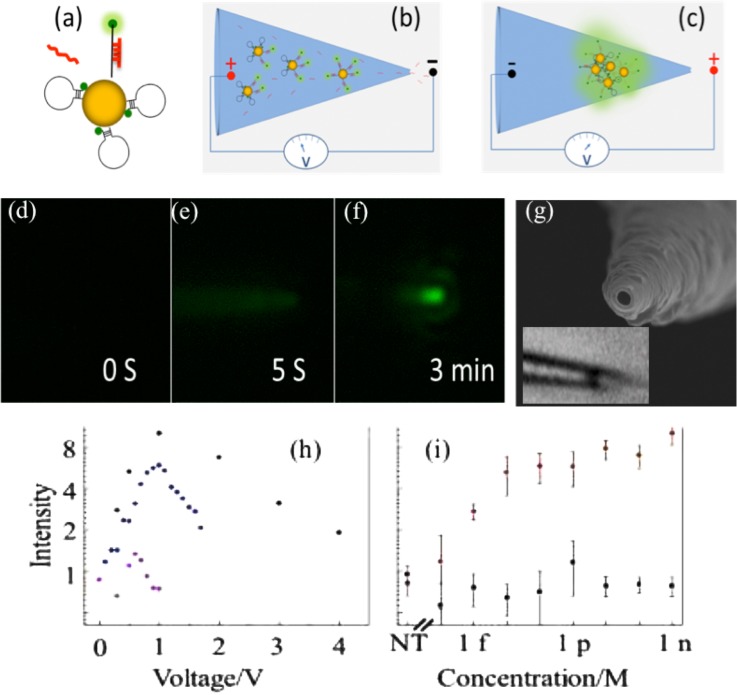FIG. 6.
Hairpin Oligo Probe (HOP)-functionalized AuNPs nanopore-based detection. (a) Upon target hybridization the fluorophore (green dot) is displaced beyond AuNP quenching distance. (b) Target miRNAs and HOP-AuNPs are driven into a conic nanocapillary by a negative voltage. (c) Voltage is reversed to aggregate AuNPs, promote hybridization, and plasmonically enhance fluorescence. (d)–(f) Microscopy sequence of HOP-AuNP packing and target miRNA hybridization in a silica conic nanocapillary; a negative voltage is applied at t = 0s and reversed at t = 10s; the plasmonically enhanced fluorescent signal is evident at t = 3 min. (g) A 100 nm nanocapillary tip SEM. Inset: light microscope image of a micron-sized 25 nm-NP aggregate inside the silica nanocapillary. The inner nanocapillary diameter is about 150 nm at the aggregate location; its distance from the tip (∼1 μm) corresponds to the ionic strength maximum in Fig. 9(a). (h) miRNA hybridization across a AuNP assembly in a conic glass nanocapillary: fluorescence intensity vs. voltage after target and non-target hybridization. (i) Fluorescent intensity for the target and for a 3-mismatch in the 23-nucleotide miRNA at different concentrations indicating little hybridization of the latter. Adapted with permission from Biomicrofluidics 7, 061102 (2013). Copyright 2013 AIP Publishing LLC.136

